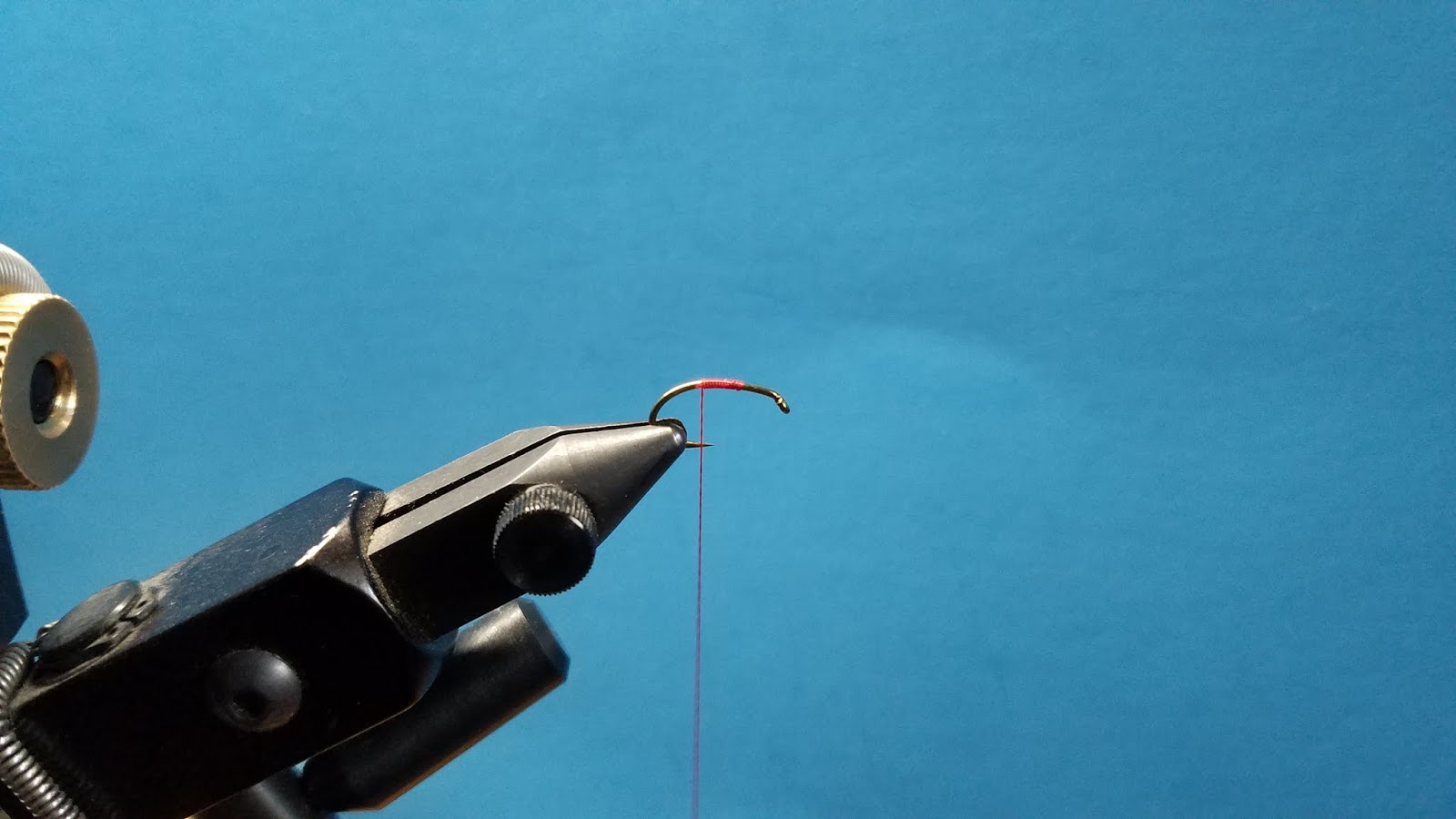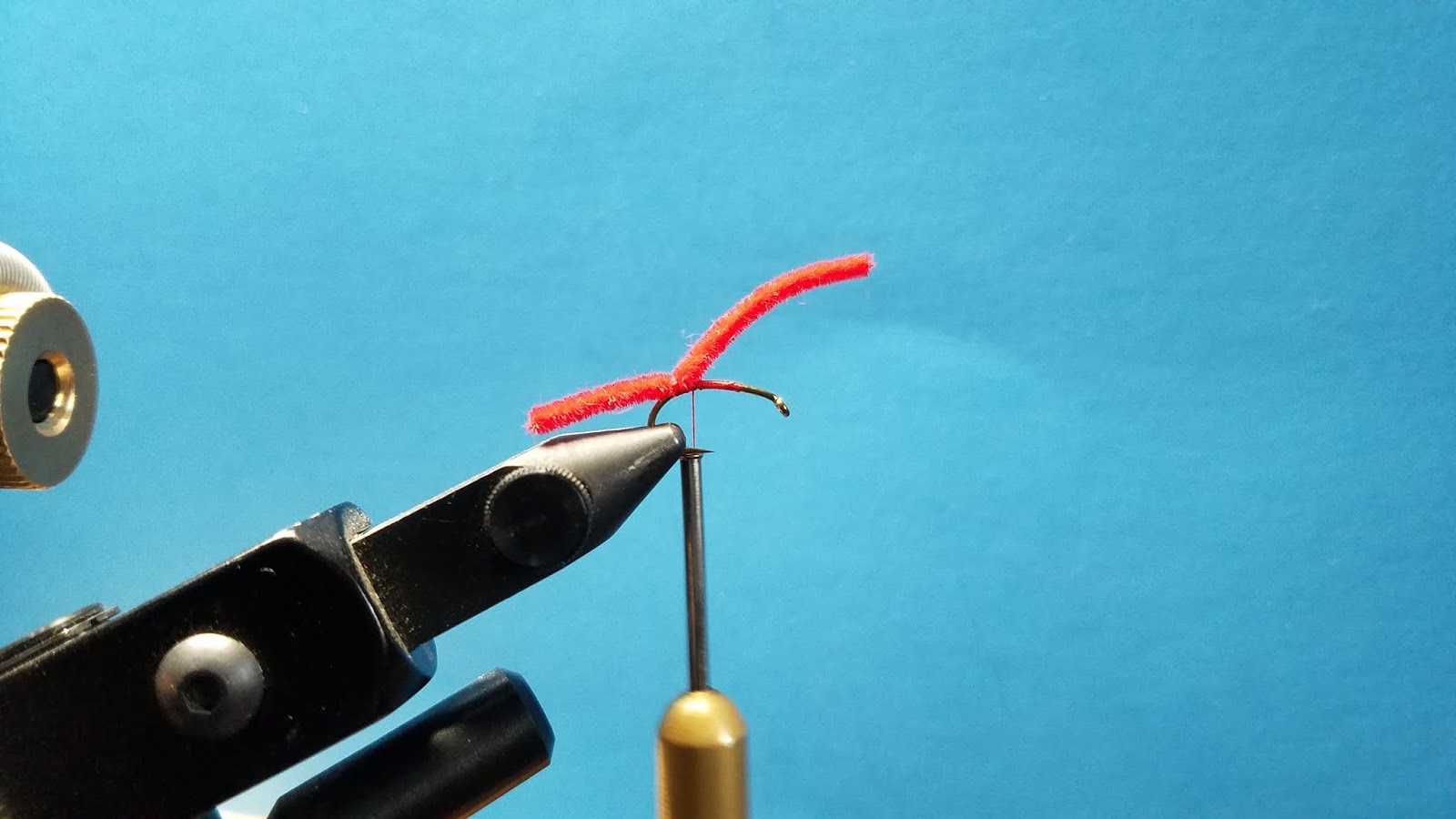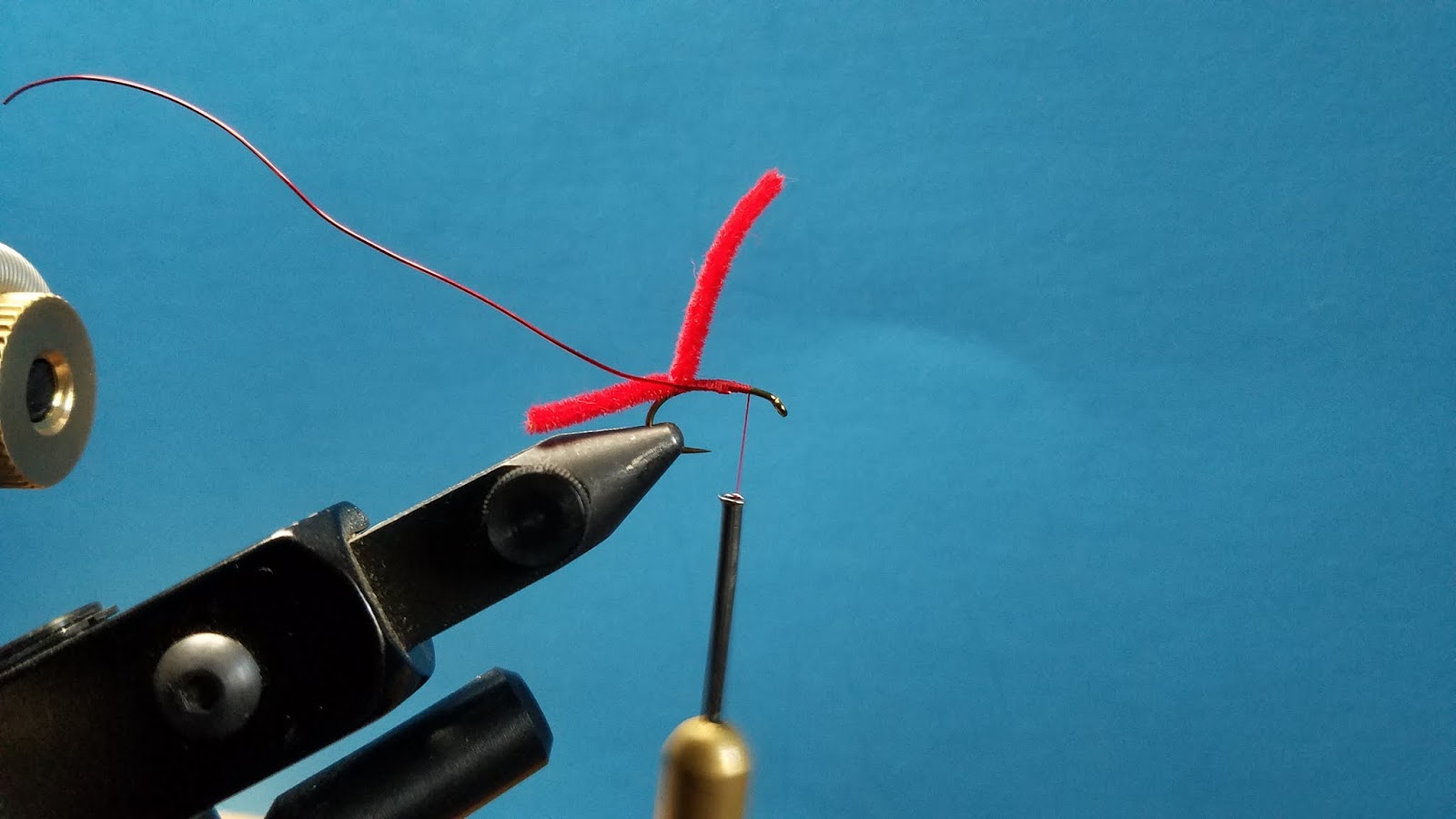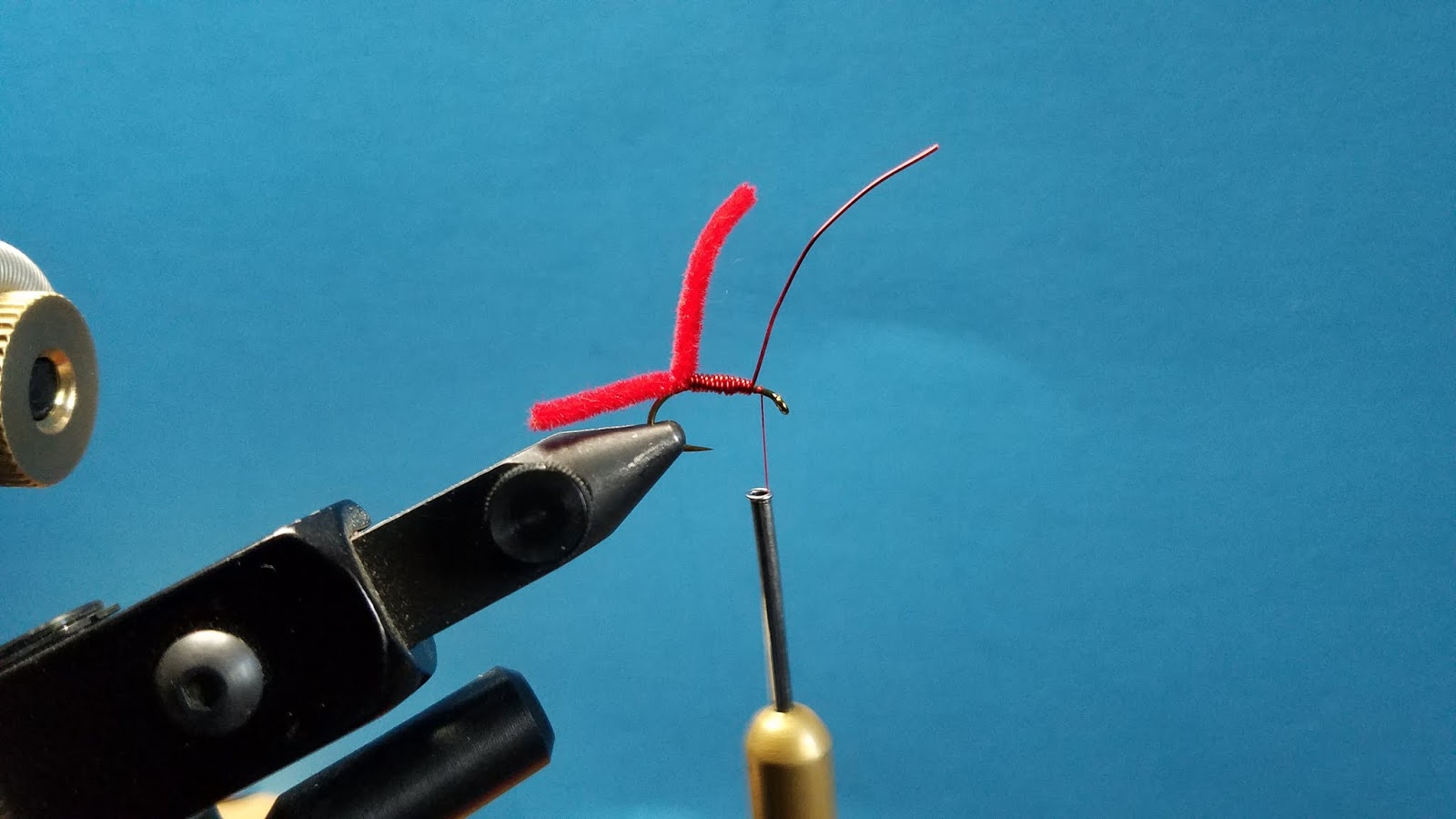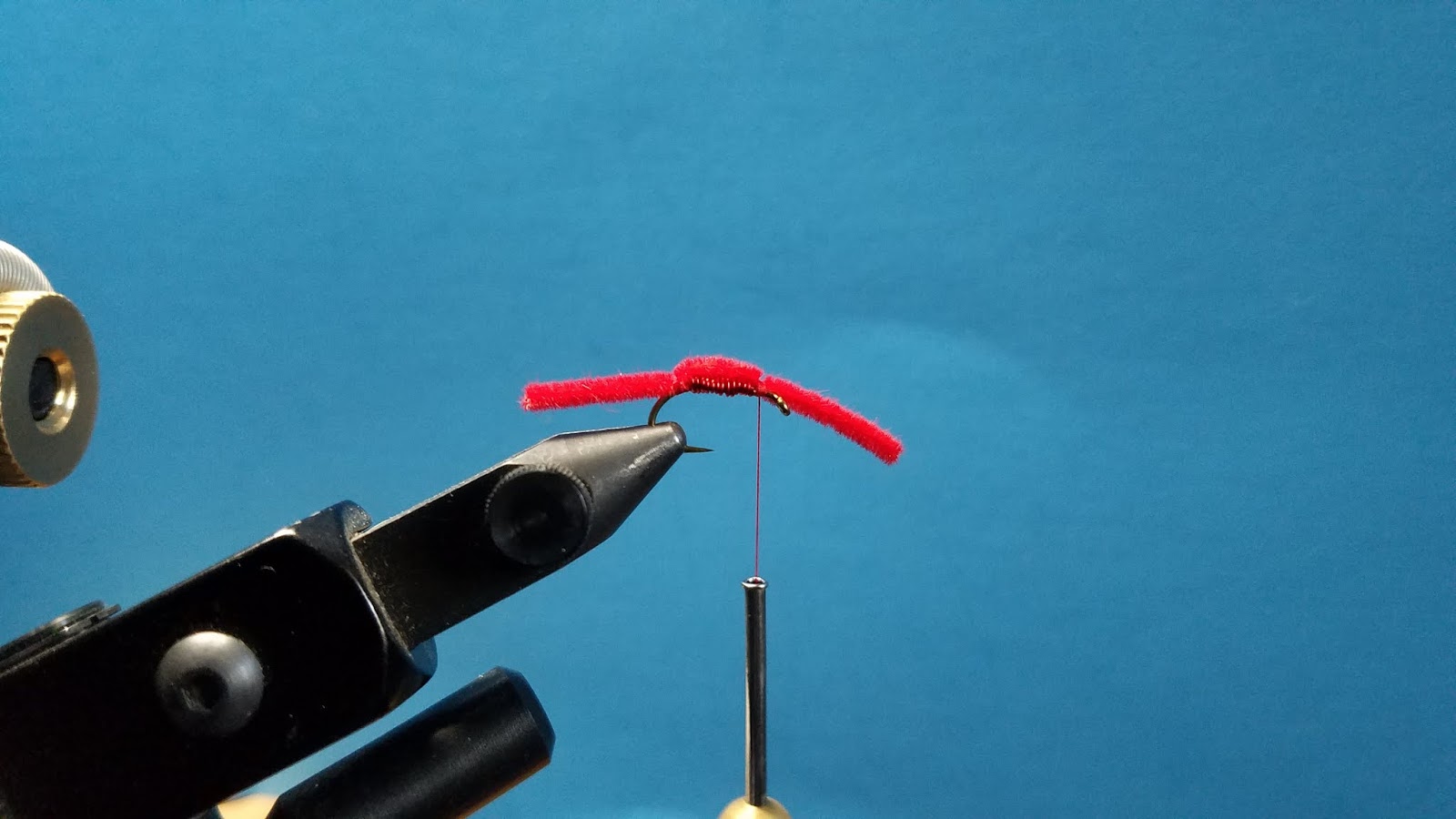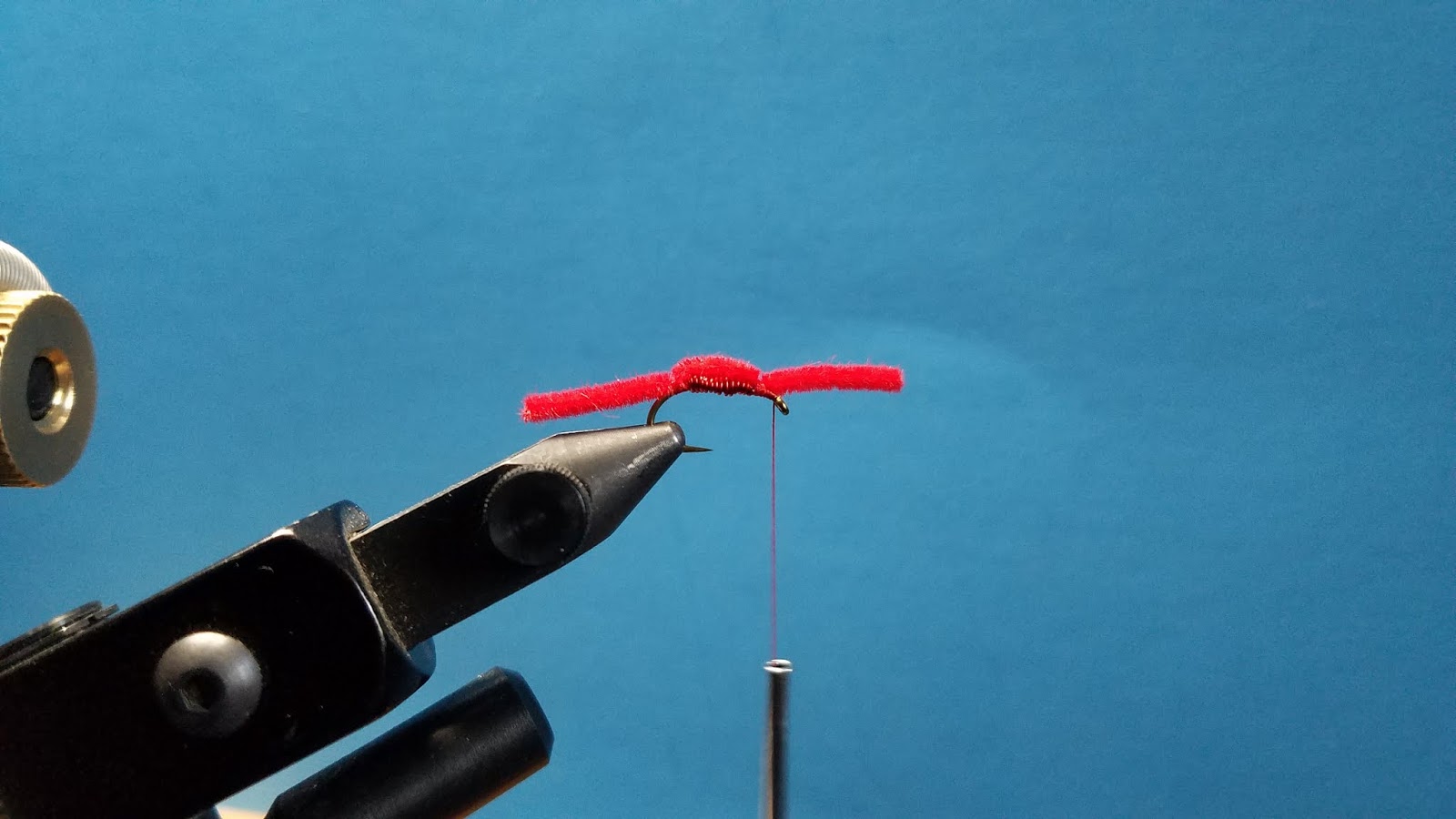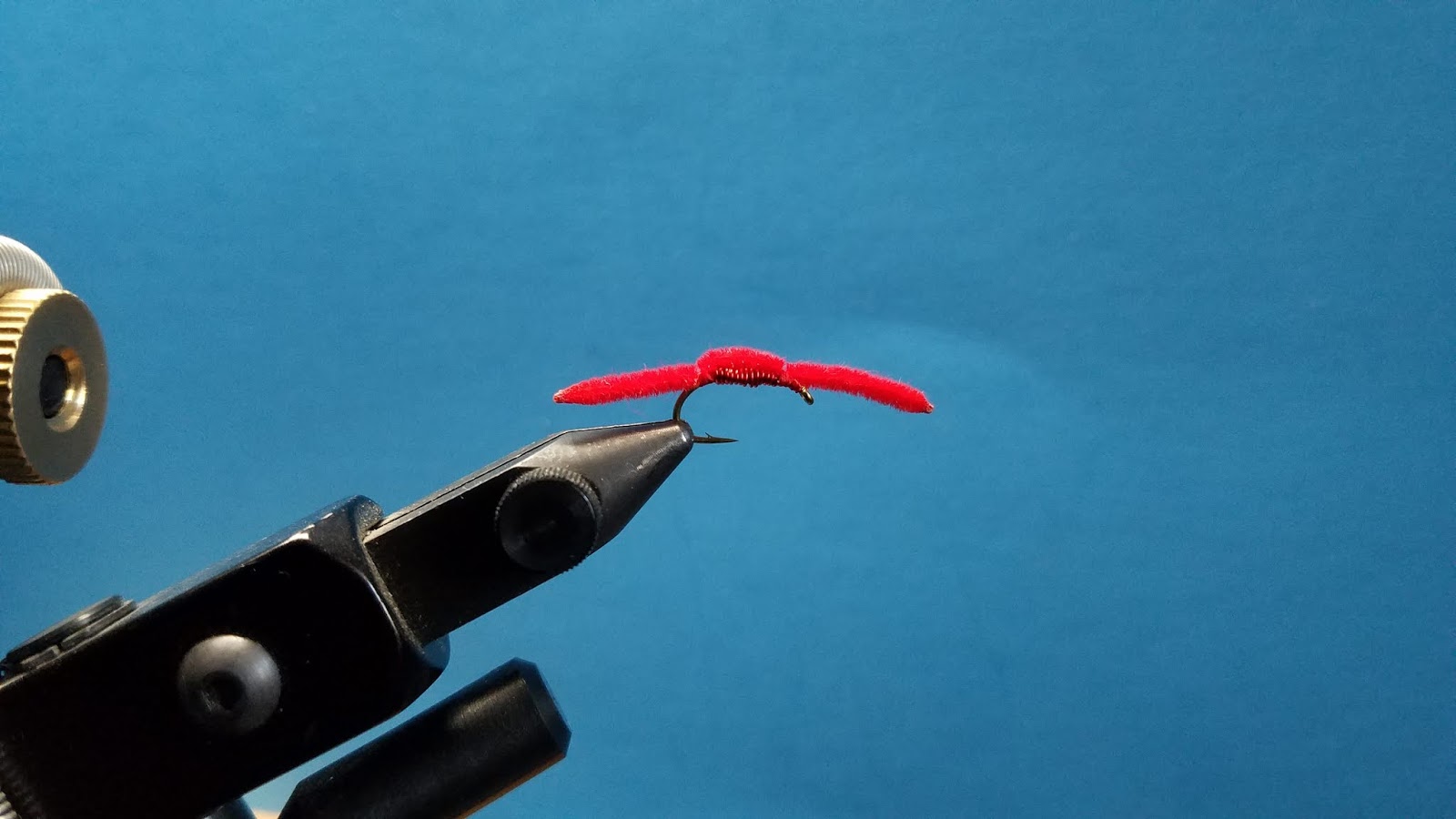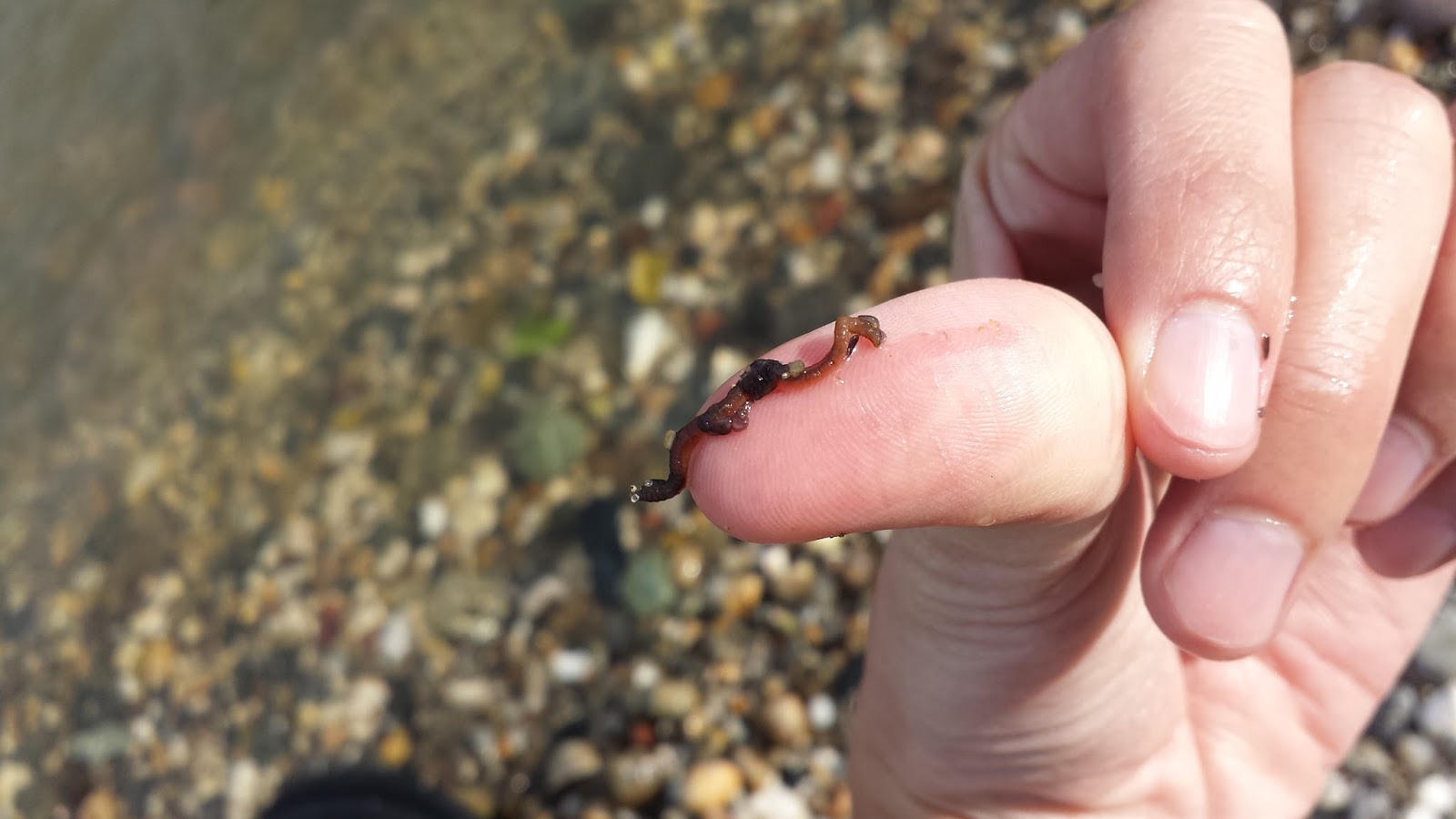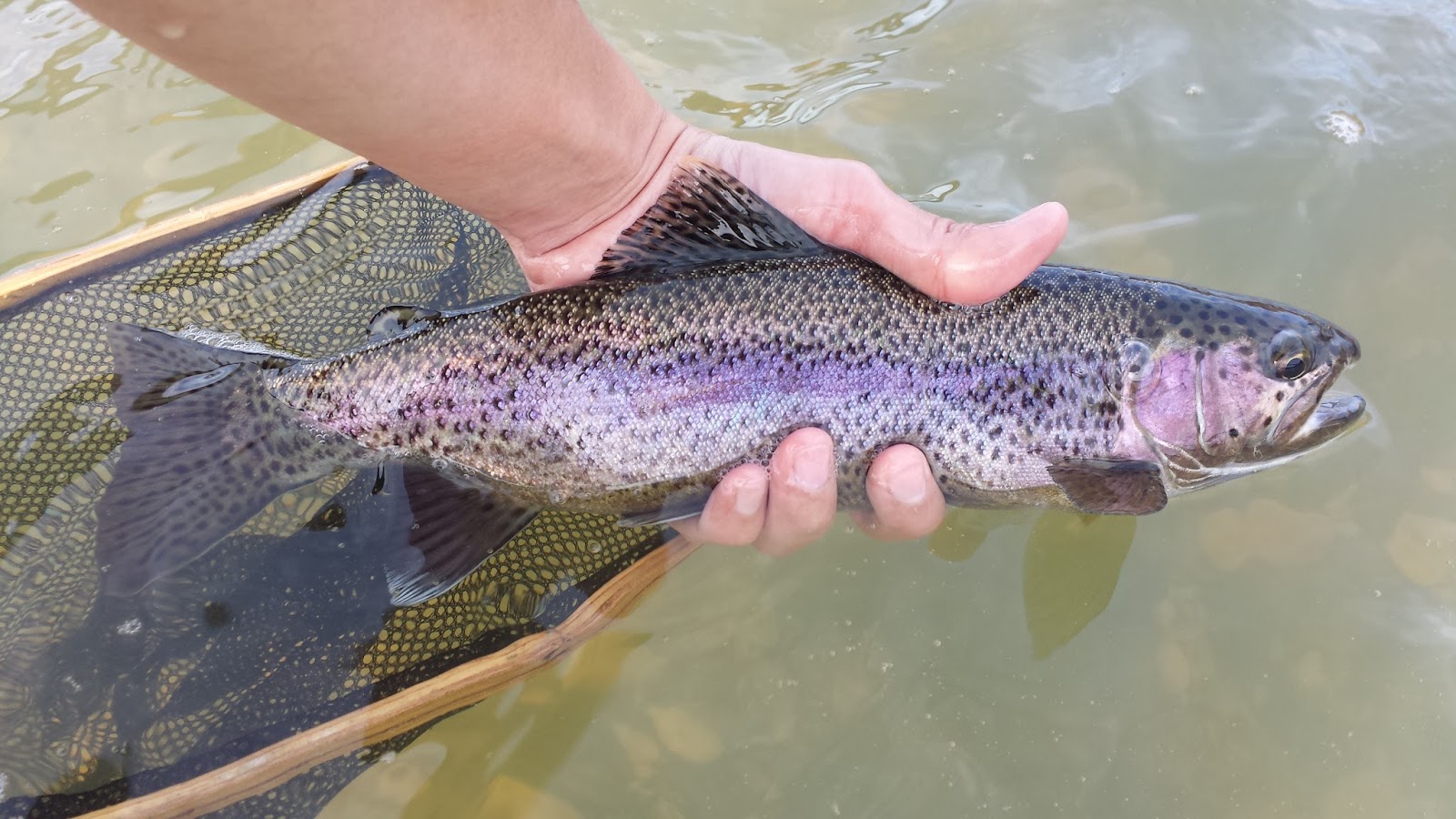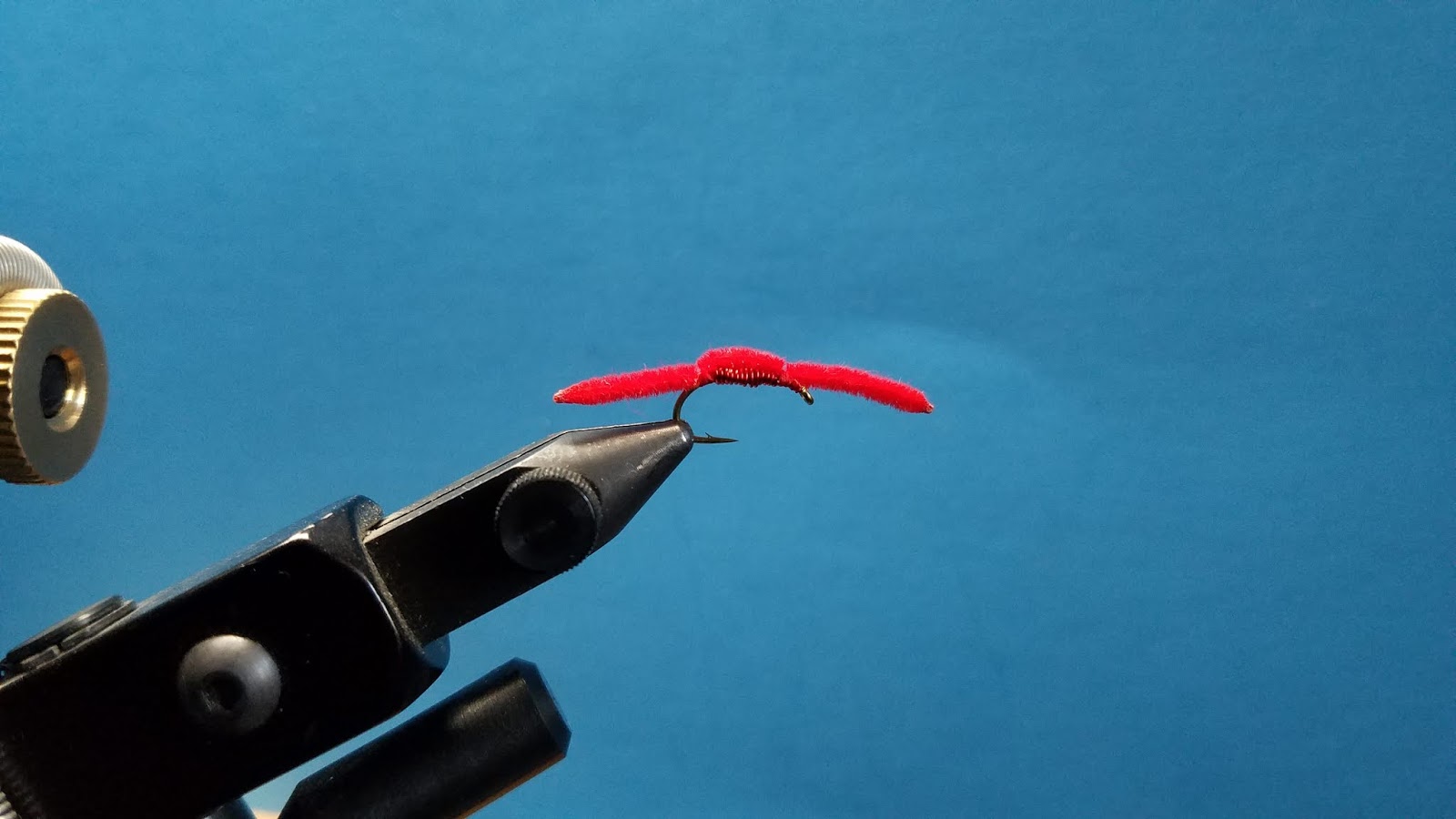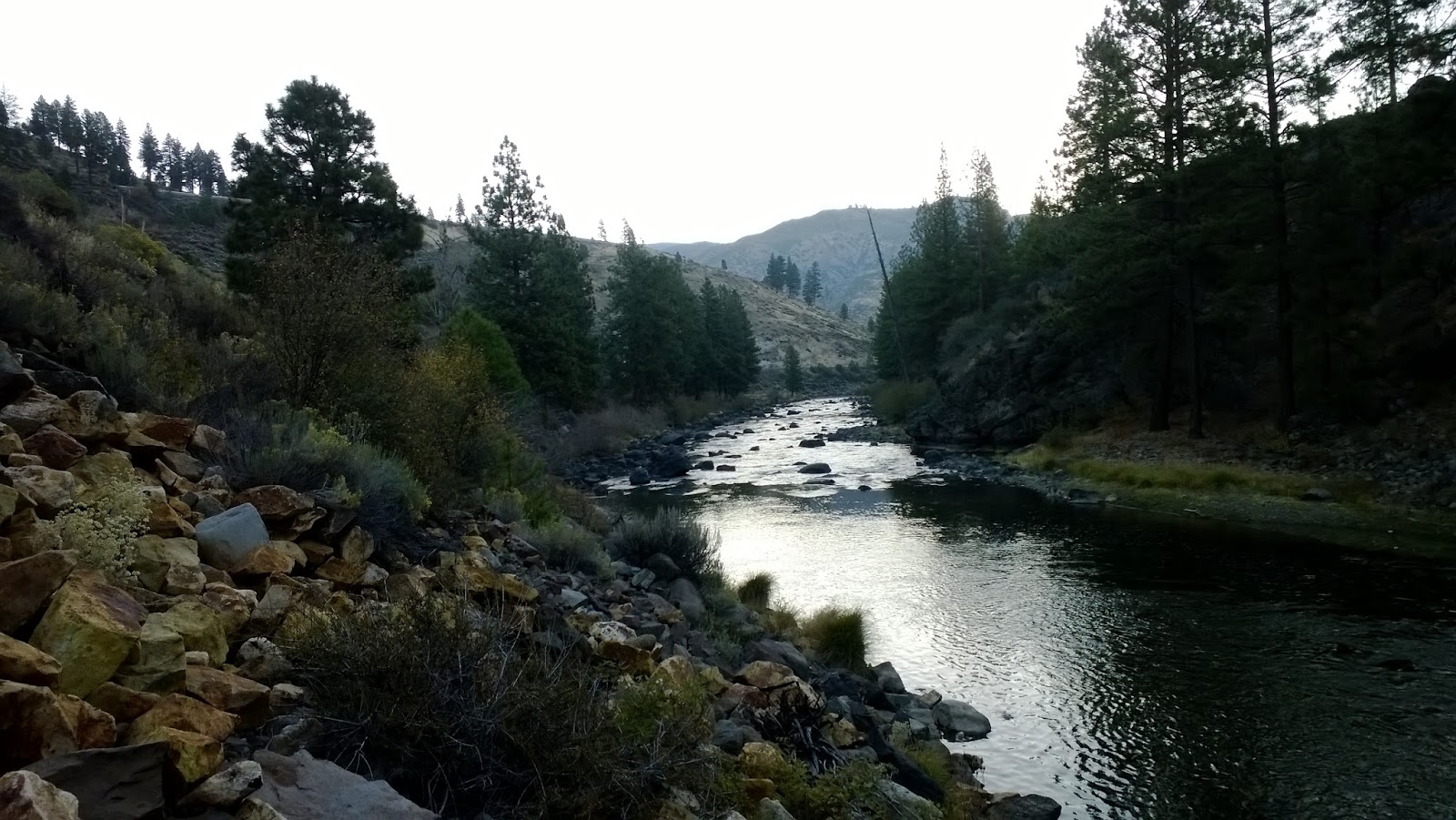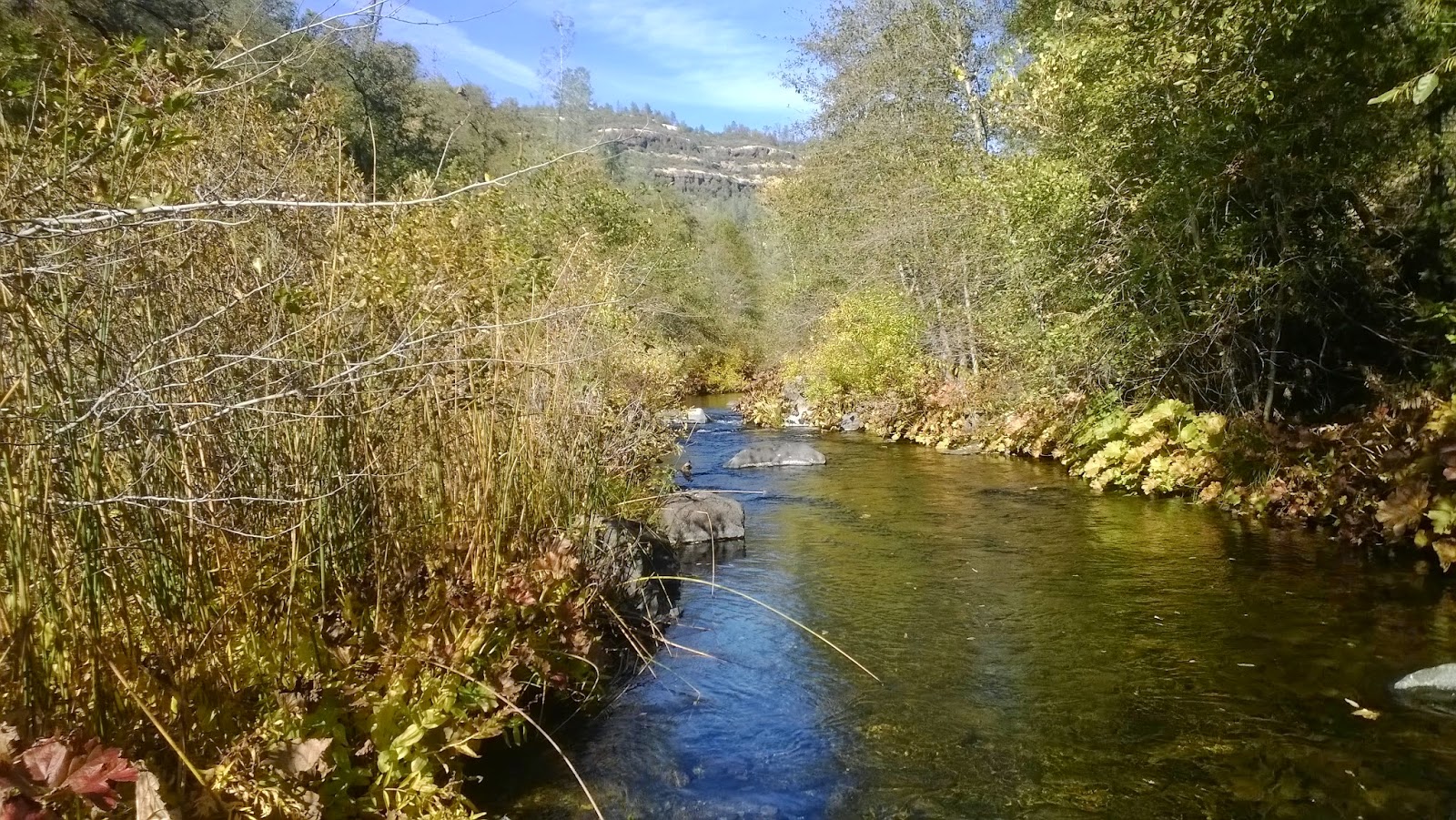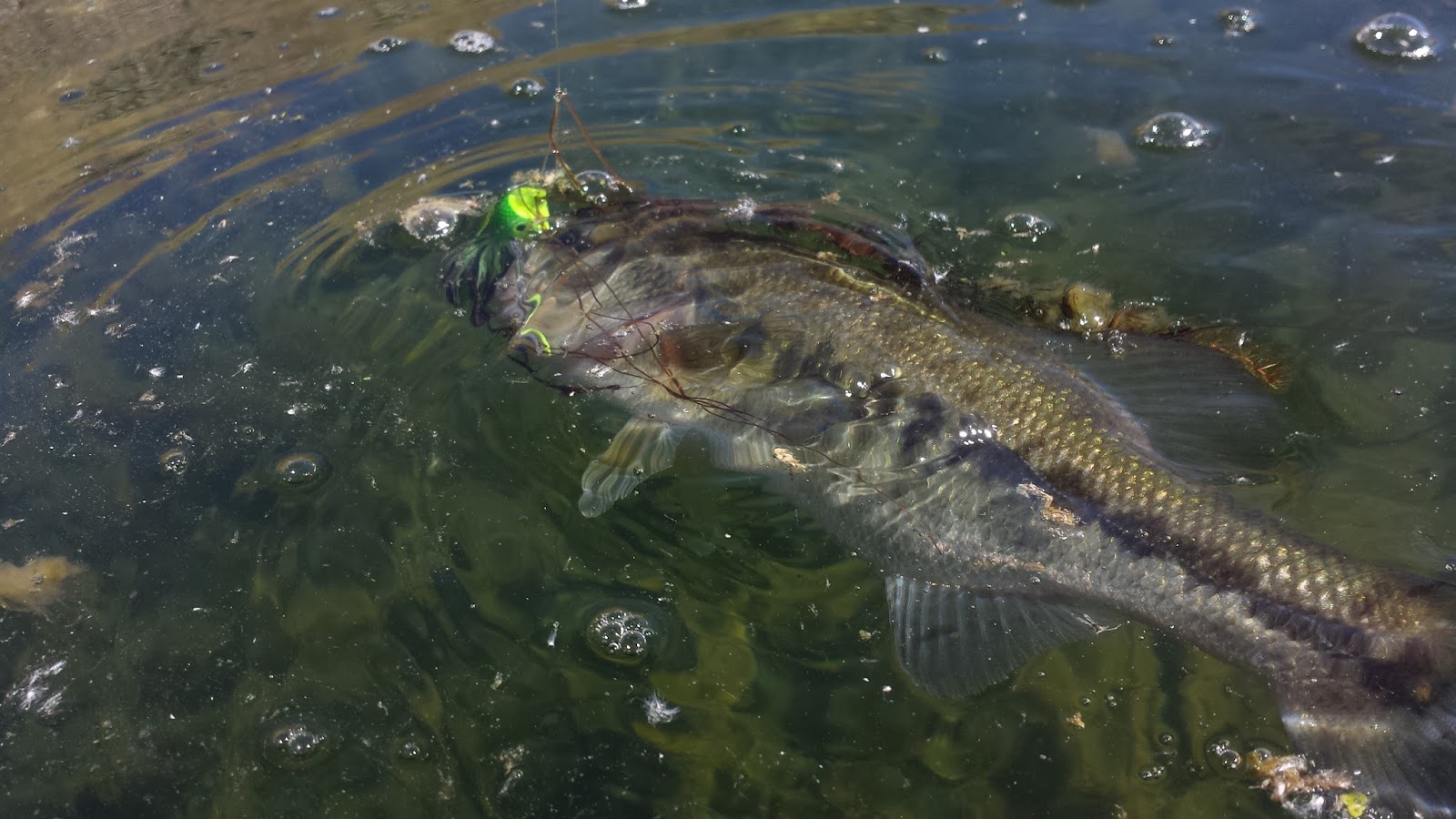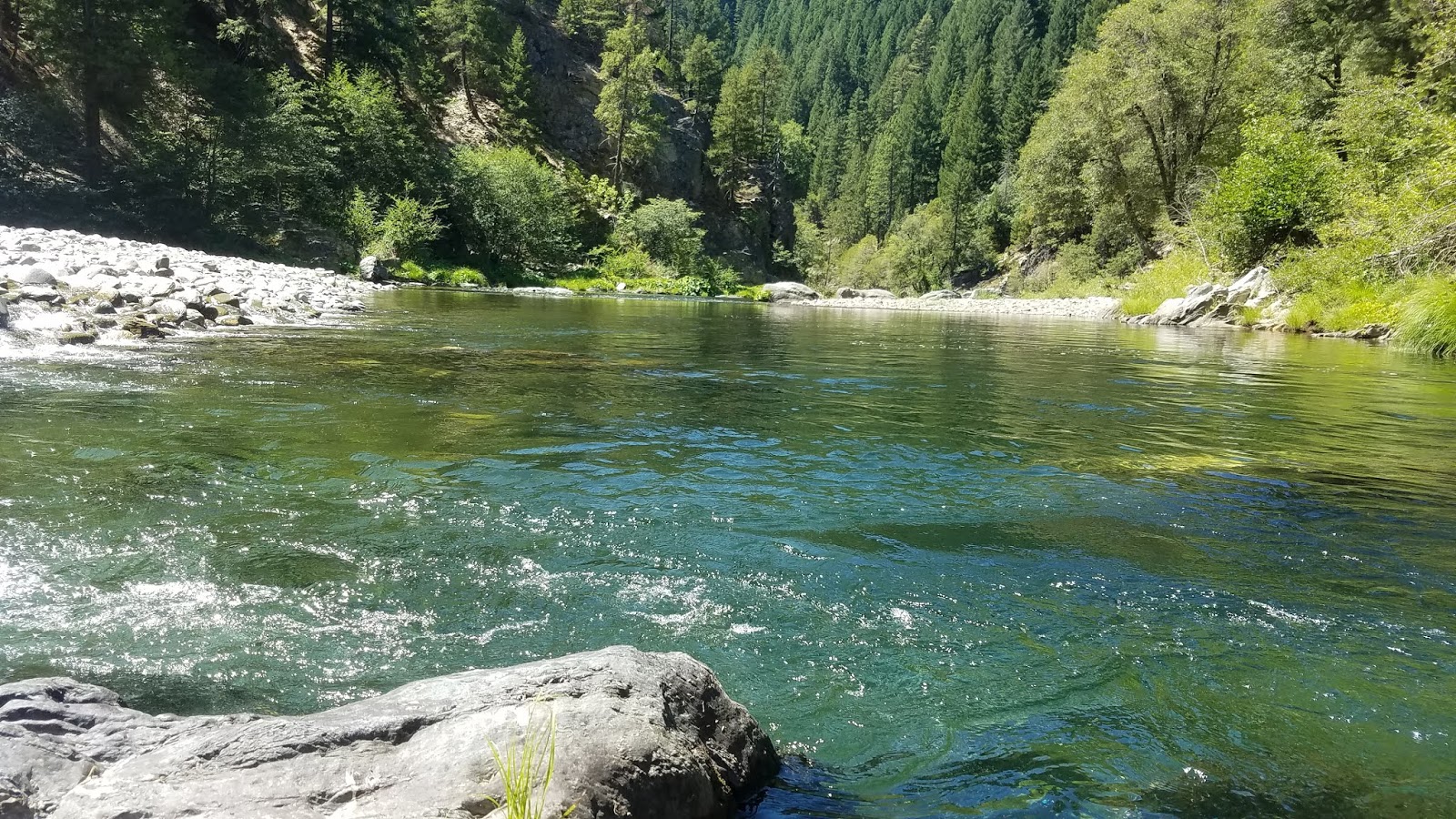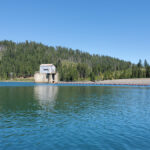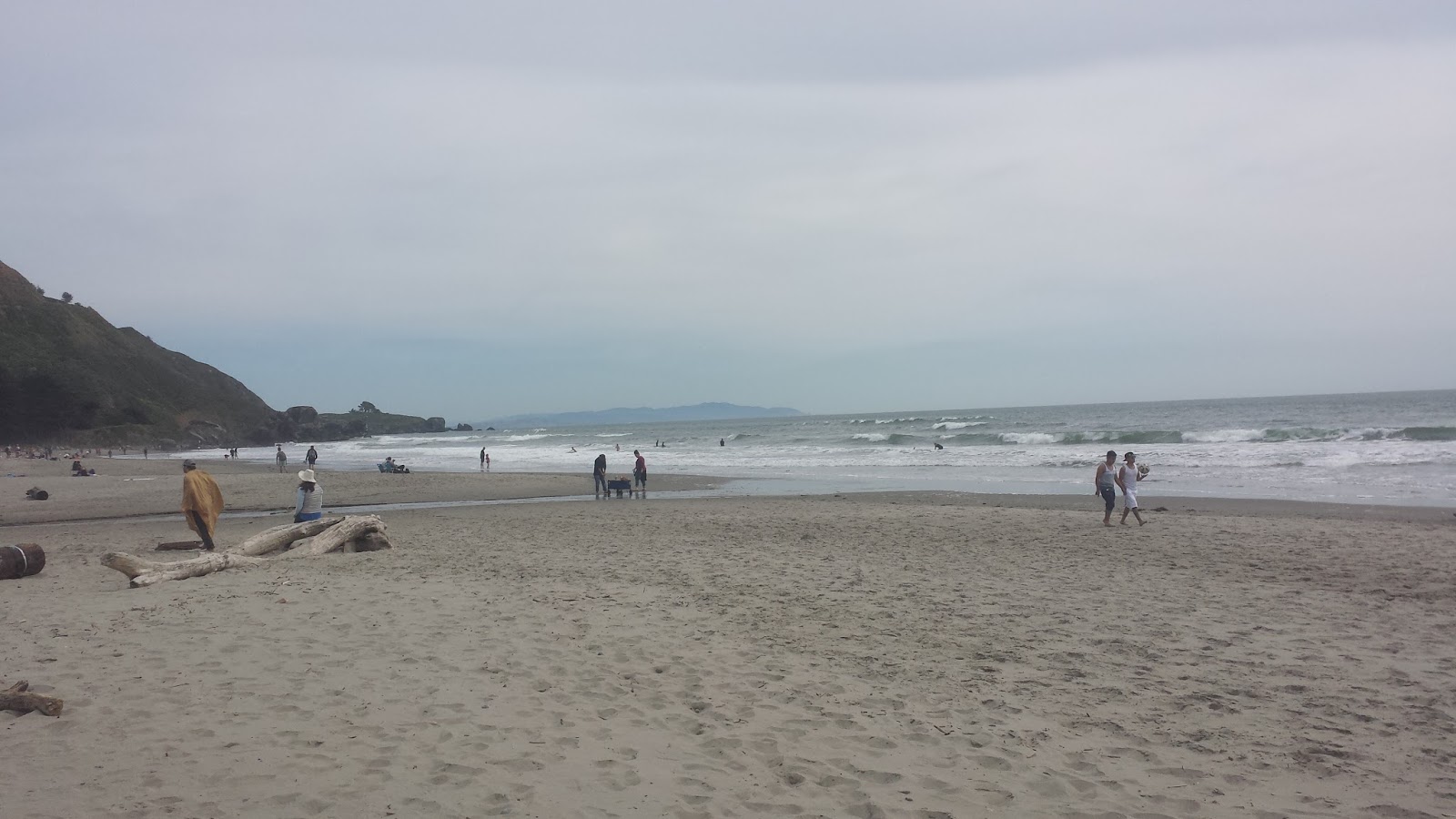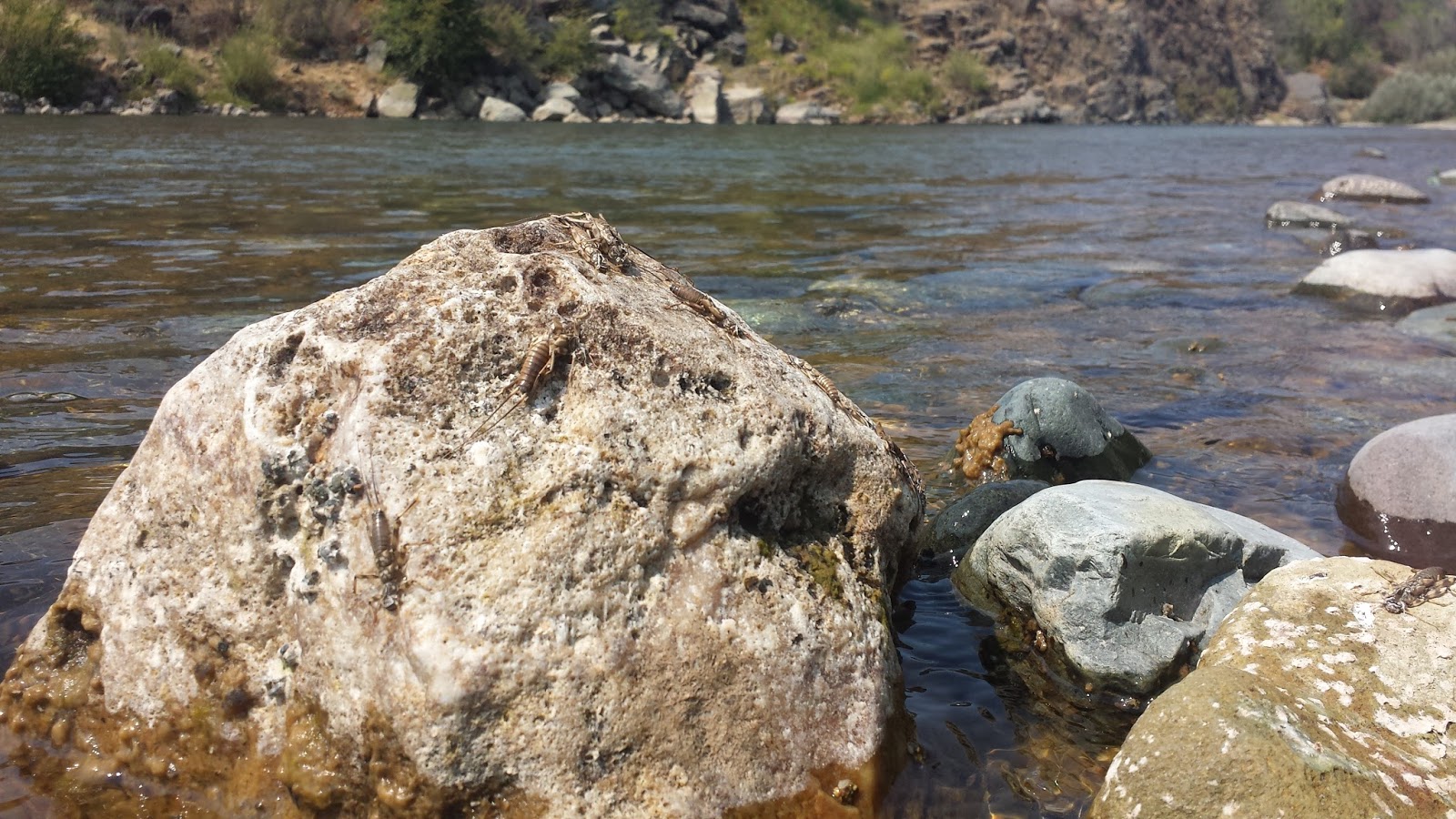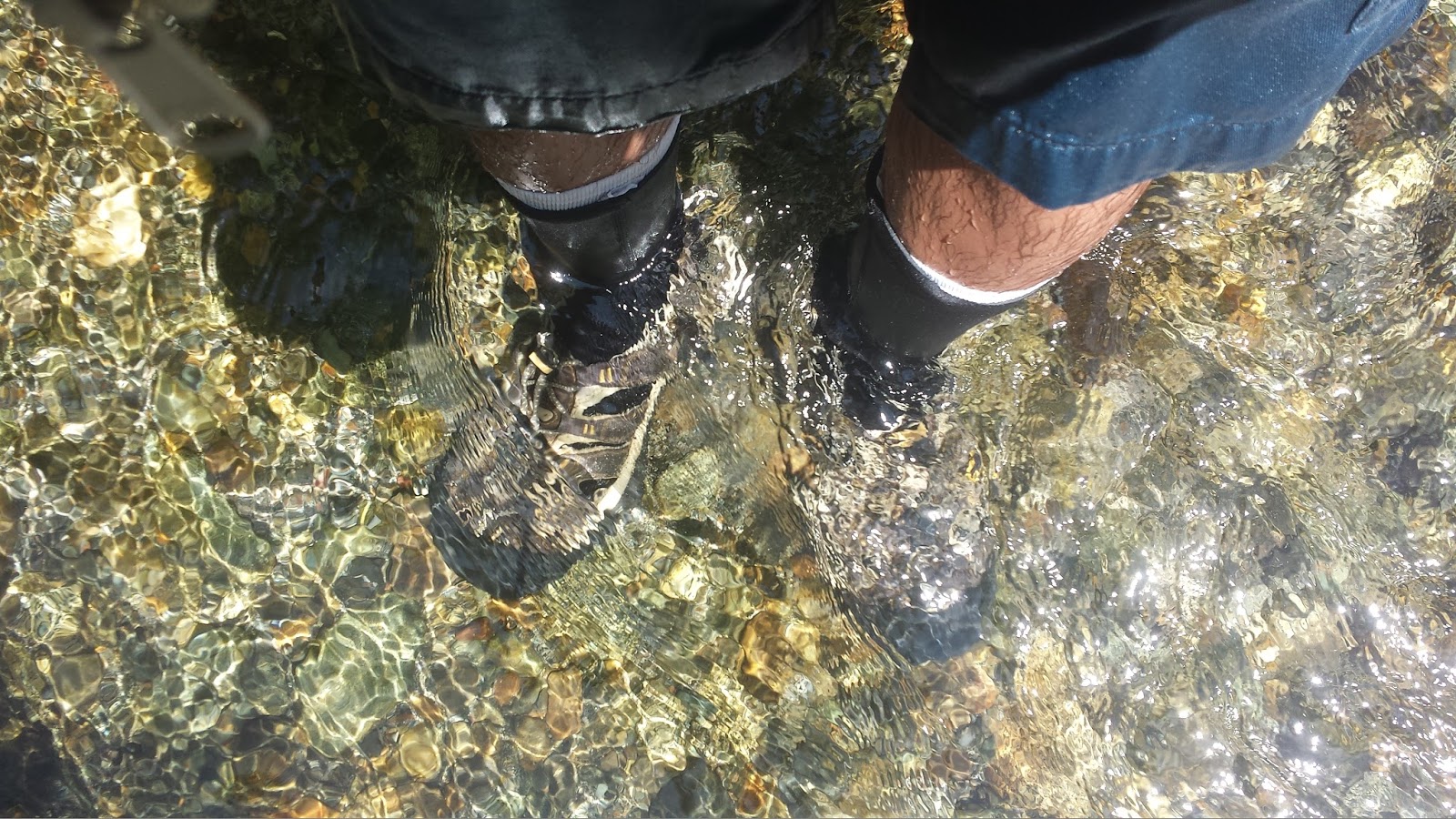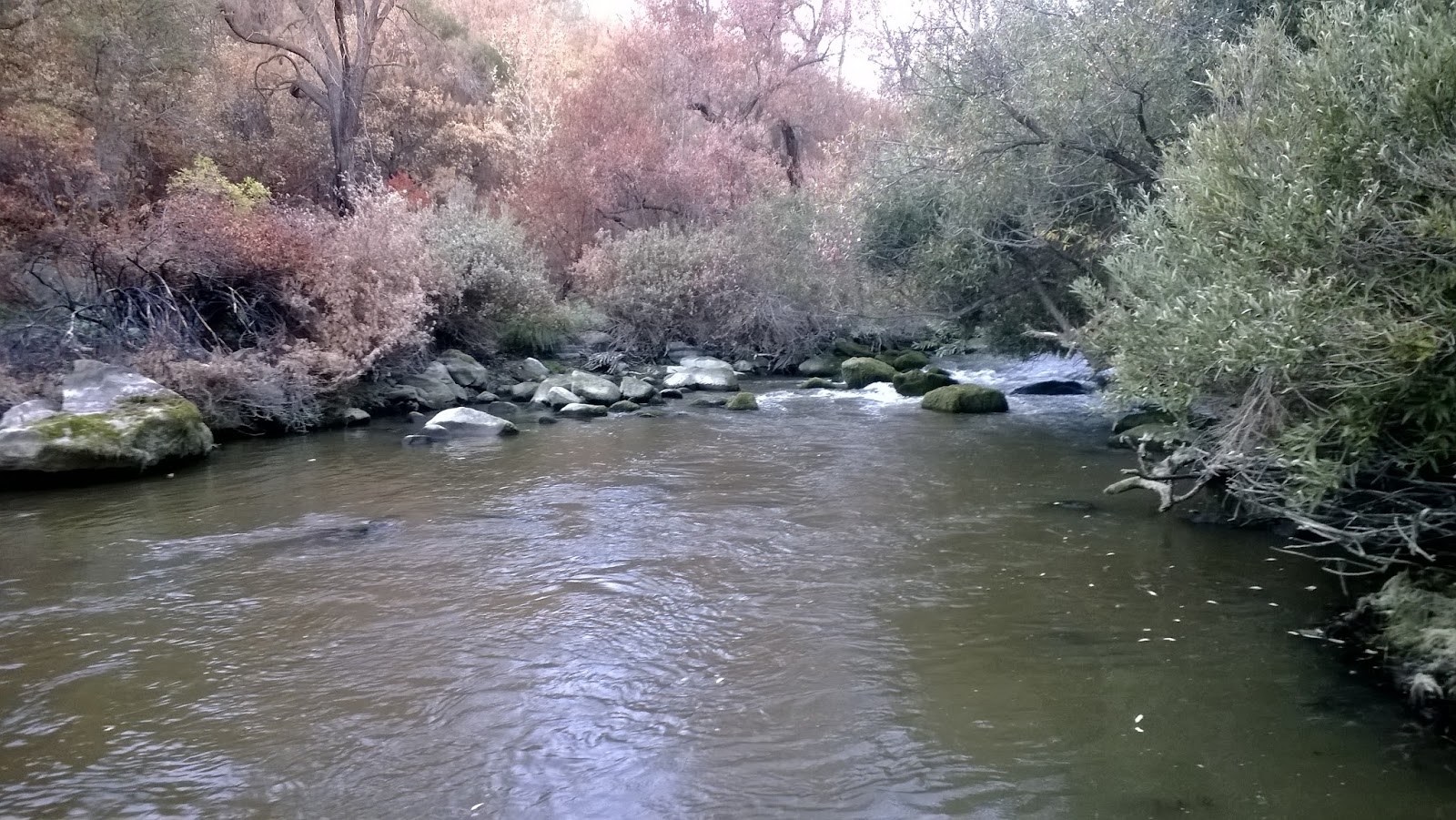Marlette Lake is a high elevation lake in Nevada within the Carson range. The lake sits at about 7,841ft and the only way to get to it is to either hike or bike. Marlette Lake is known for its brook trout, rainbow trout, and Lahontan cutthroat trout that are used as brooders for Nevada’s fisheries. These fish can range from very small 6” fish to large trophy size +20”.
The hike up to Marlette Lake begins at Spooner Lake and is about a ten mile round-trip; five miles of steady uphill and five miles back downhill. The elevation gain is about 1,140ft. The hike up Marlette Lake is half the experience of fishing the lake and though it was pretty tough it was worth it.
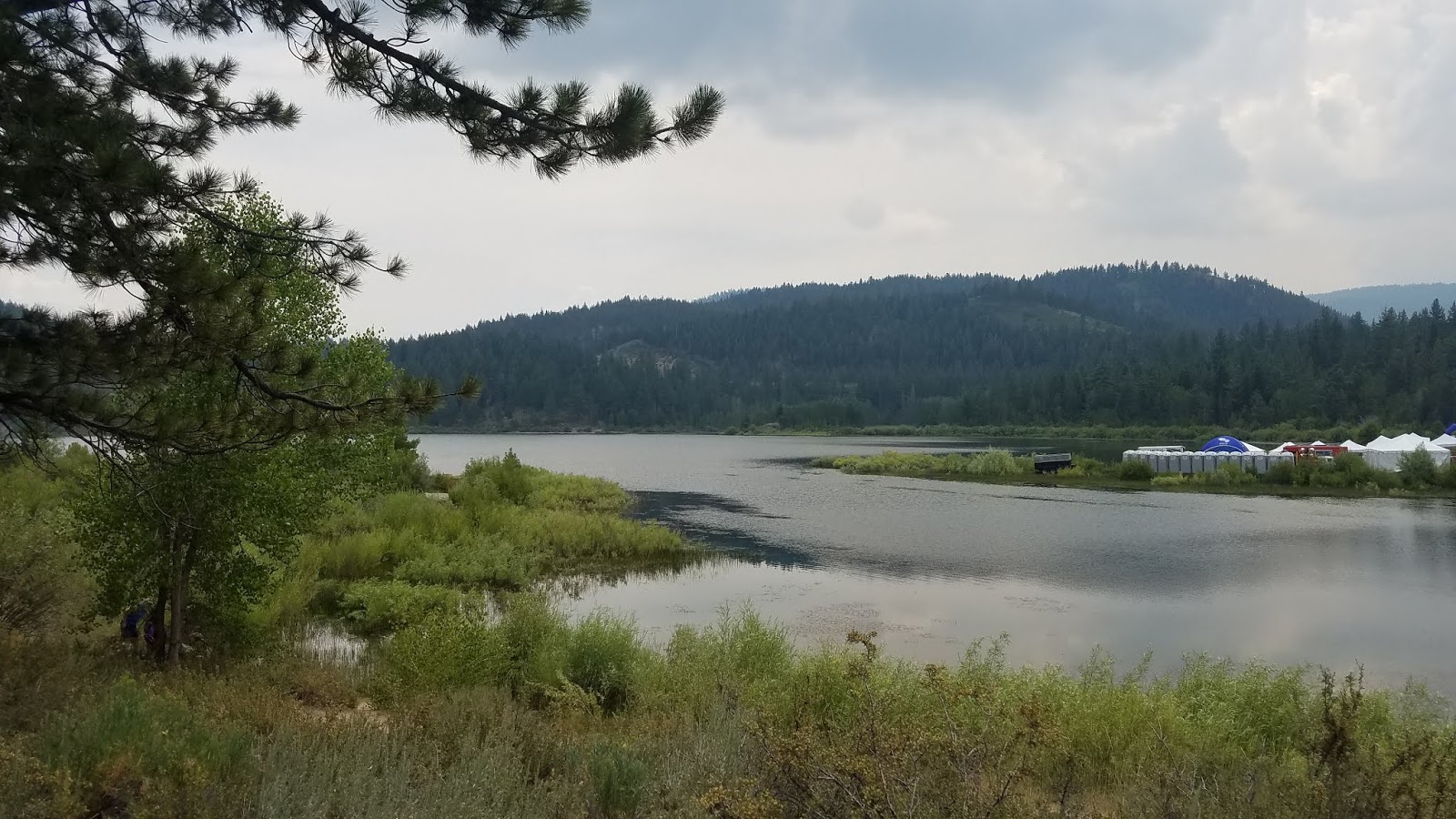 |
| Spooner Lake |
Our hike began at about noon from Spooner Lake. Due to a running event that was taking place around the lake we had to shuttle in from the watercraft inspection area a few hundred yards away from the entrance. After a quick bathroom stop we were off to Marlette Lake.
The hike to the lake wasn’t too difficult but it was challenging. The first mile was pretty leveled however the following three miles was steady uphill climbing. It wasn’t until the last mile where you would then start to descent down to the lake.
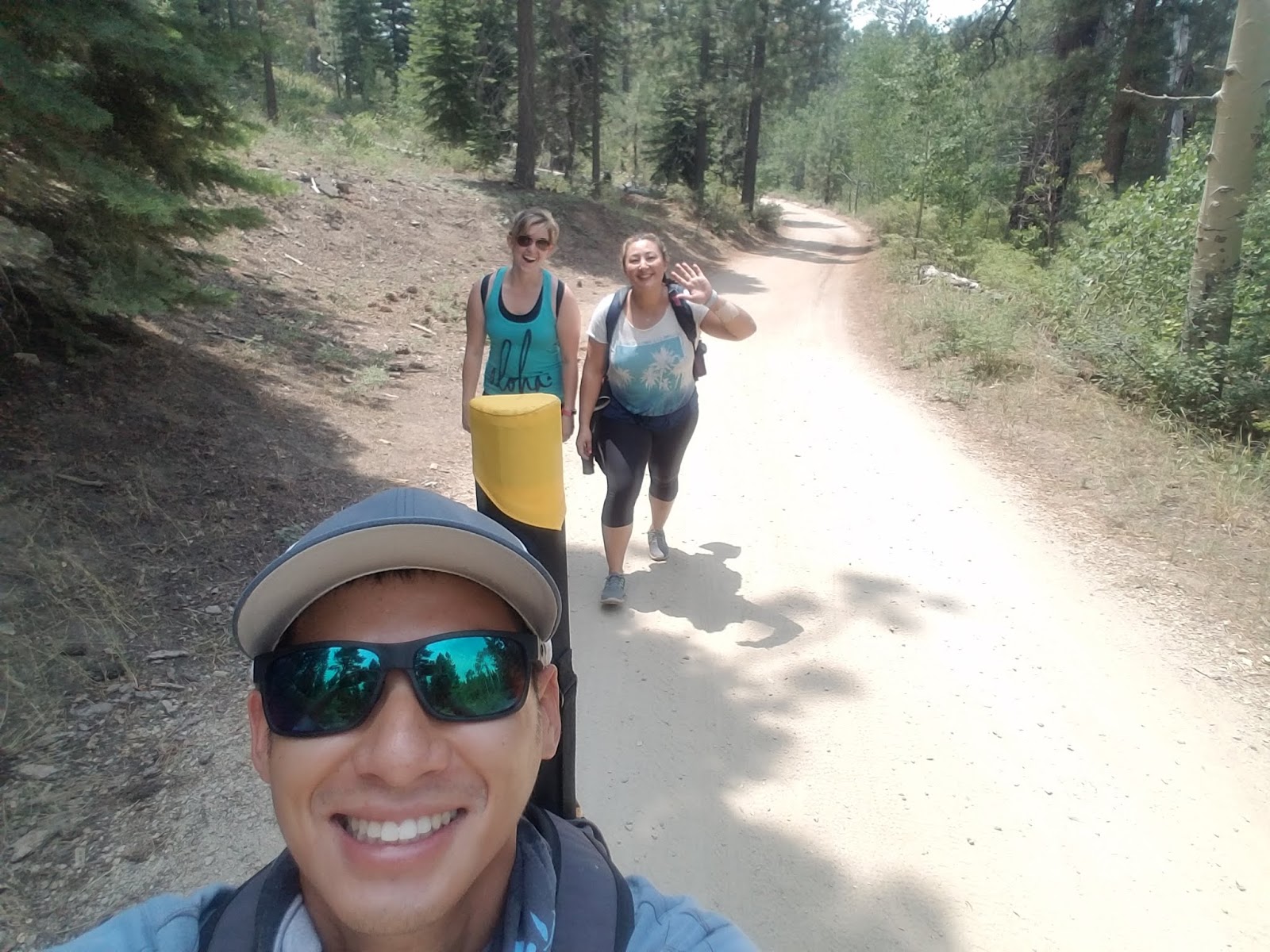 |
| Hiking Up |
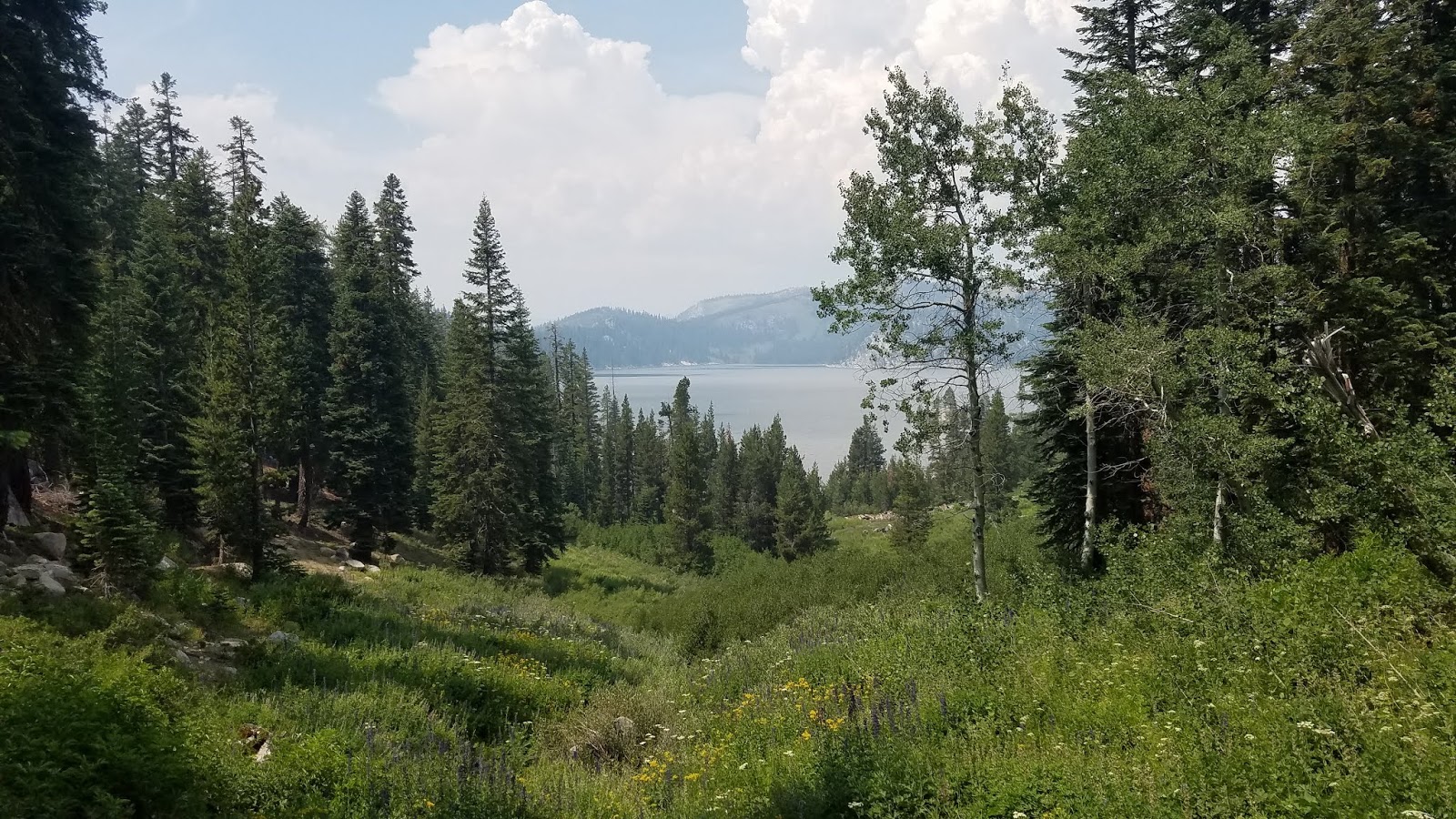 |
| First View of Lake Marlette |
We arrive at Marlette Lake at around 3pm and found it to be as beautiful as it should be. An inlet creek that was modified for spawning could be found right as you entered the first access to the lake. I brought my 5WT with me along with several different flies. The first pattern I tied on was an olive woolly bugger which I stripped from the banks. The water was surprisingly warm which had me a bit worried. On my second cast I hooked what felt like a nice fish and into the net was my first big brookie.
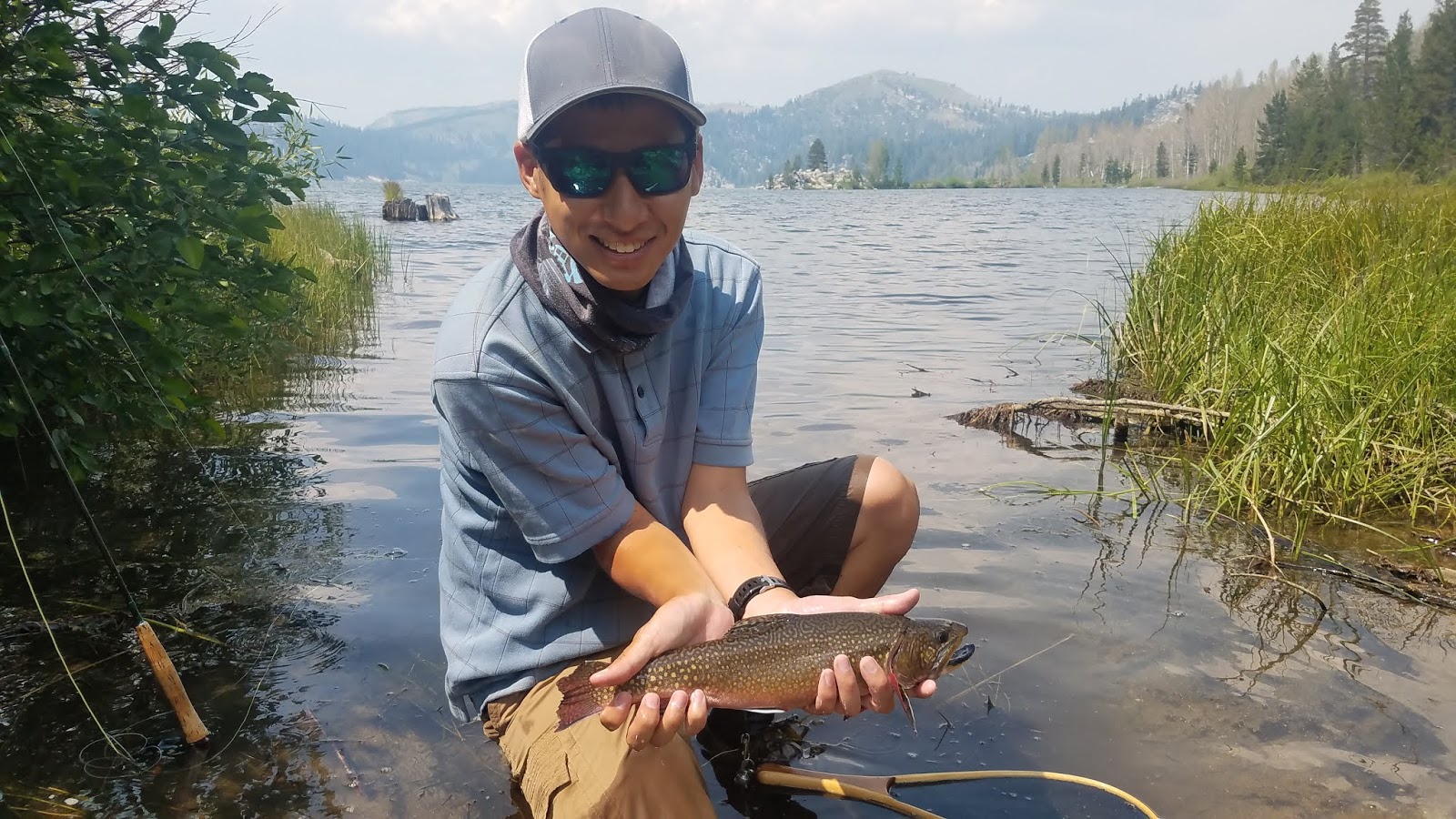 |
| Nice Big Brookie |
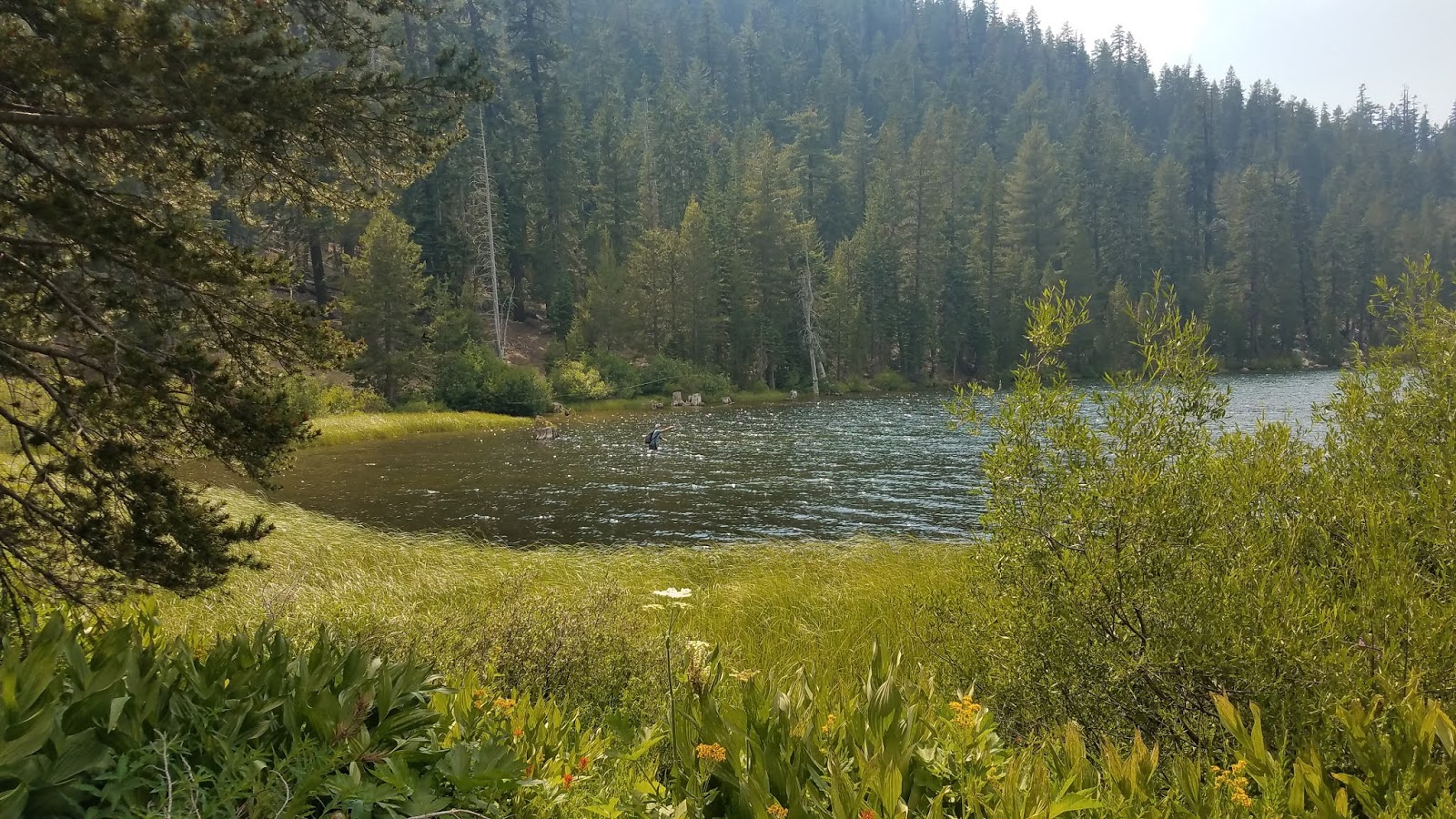 |
| Casting Marlette Lake |
After some success I continued fishing but couldn’t get any more takes. I switched to a smaller pattern, a zebra midge, and hooked a small brookie. I contemplated whether or not I wanted to catch more fish or bigger fish and decided it was either go big or go home. I switched back to my bugger and started pounding the banks for a big grab. The shore around the lake was pretty shallow and weedy so I used a beadheaded bugger on a floating line. I covered some water on the eastern side and hooked another big brookie that threw the hook. I kept making my way north but couldn’t find any fish.
The clock was ticking and I was starting to feel it. I knew it would take about two hours to get back down the hill which left me only about an hour before we had to start heading back. I got out of the water and started hiking towards an area that looked like an island. As I entered the cove next the island I spotted several trout cruising around. It was a good mix of primarily rainbow trout with a few brook trout all between 10” – 18”. These fish were keyed in on white moths that were committing insect suicide by jumping into the lake. I quickly tied on a Sheep Creek special and hooked my first Marlette rainbow trout. It wasn’t a big fish but it got me closer to a grand slam. I continued to fish and hooked a few more fish before I reached my time limit.
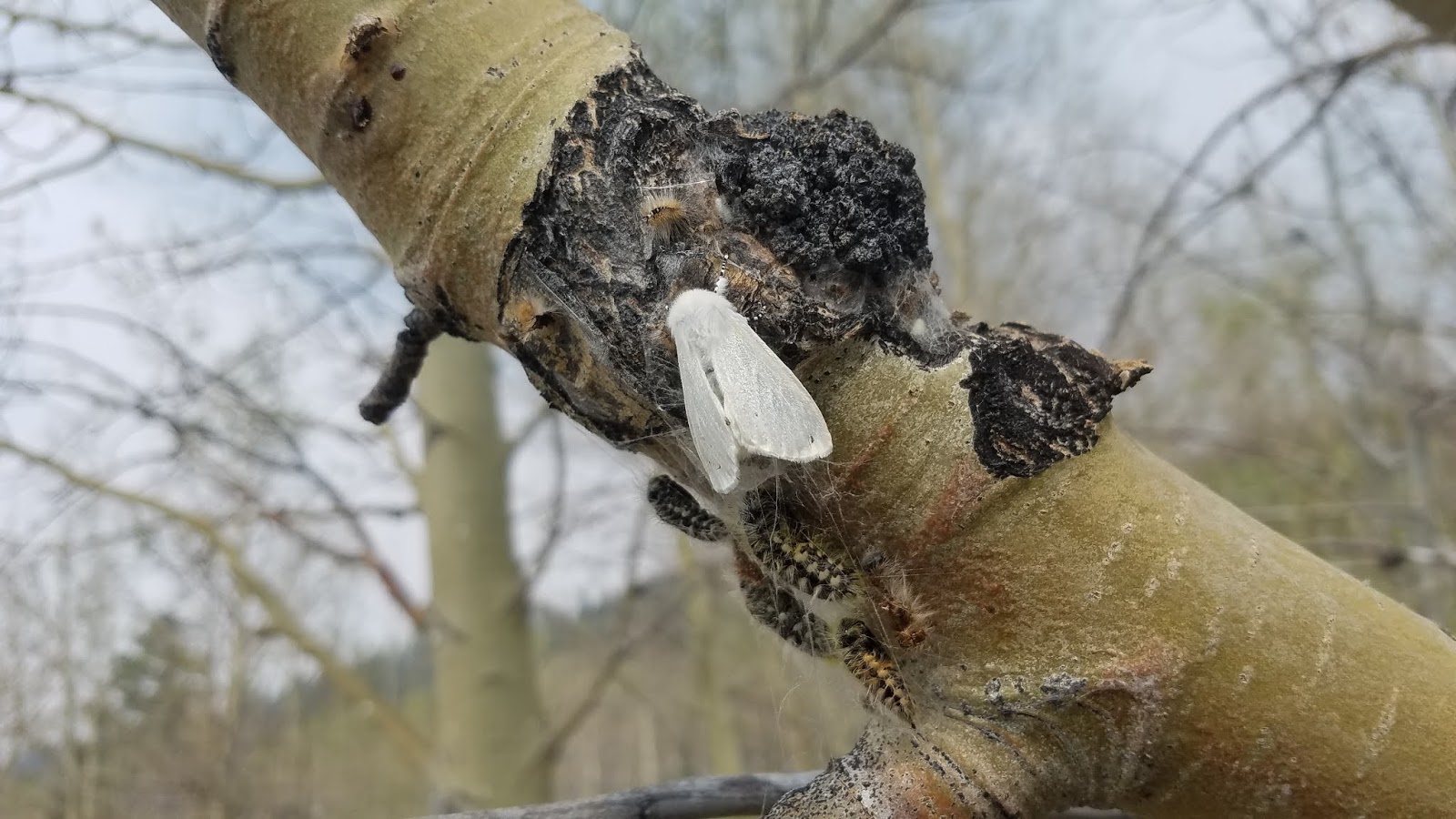 |
| White Satin Moth |
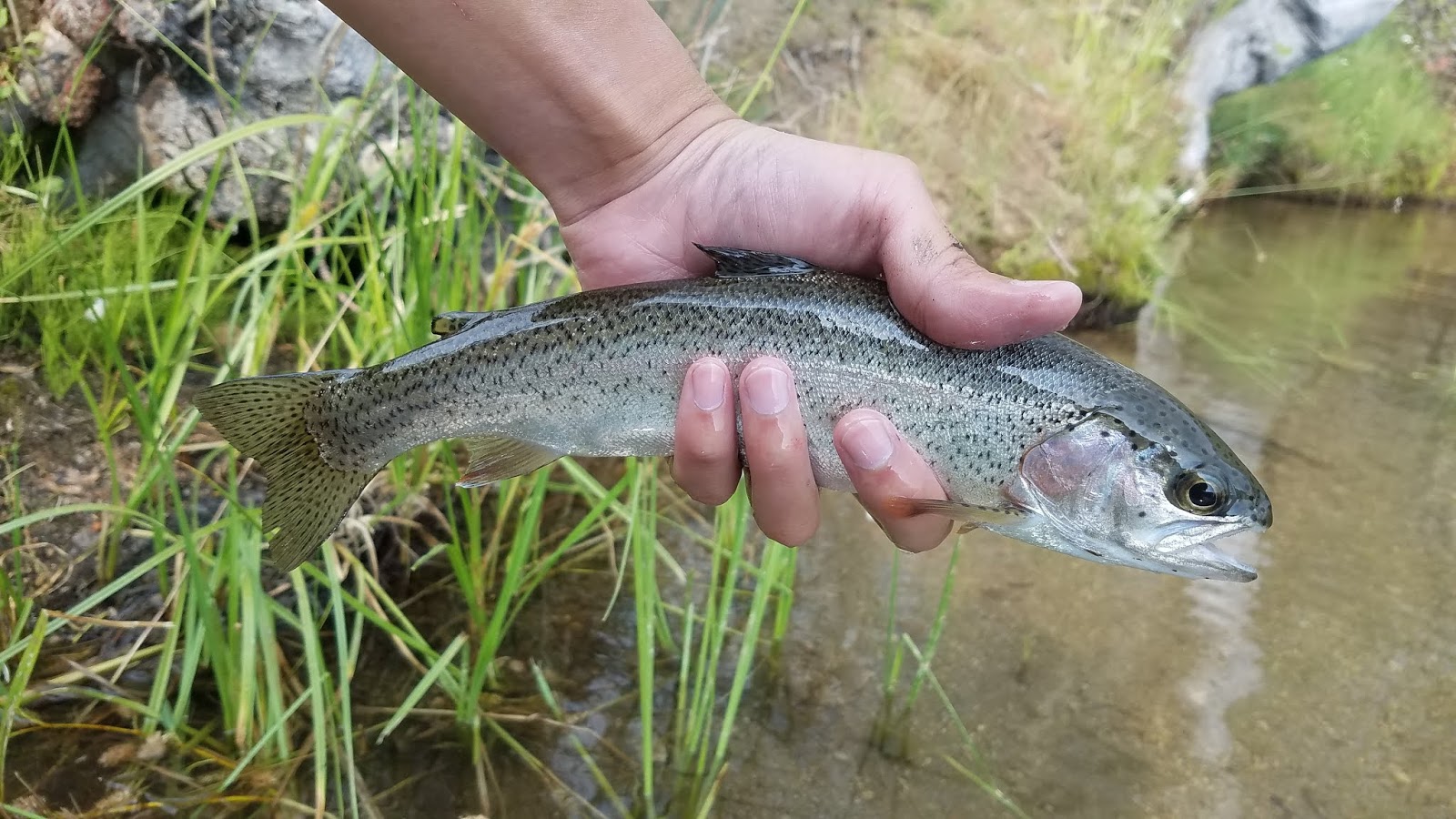 |
| Marlette Rainbow |
We started to hike back down at around 6pm. The sound of thunder kept us company during our downhill trek and we finally arrived at our initial starting point at around 8pm.
My impression of Marlette Lake is a moderately difficult hike with the reward of catching some nice fish at the end. The weather was perfectly overcast during our hike which kept the temperature nice and comfortable. It was a long day but overall worth the trip up. Though I wish I had more time to fish, I had a lot of fun and would do it again.
